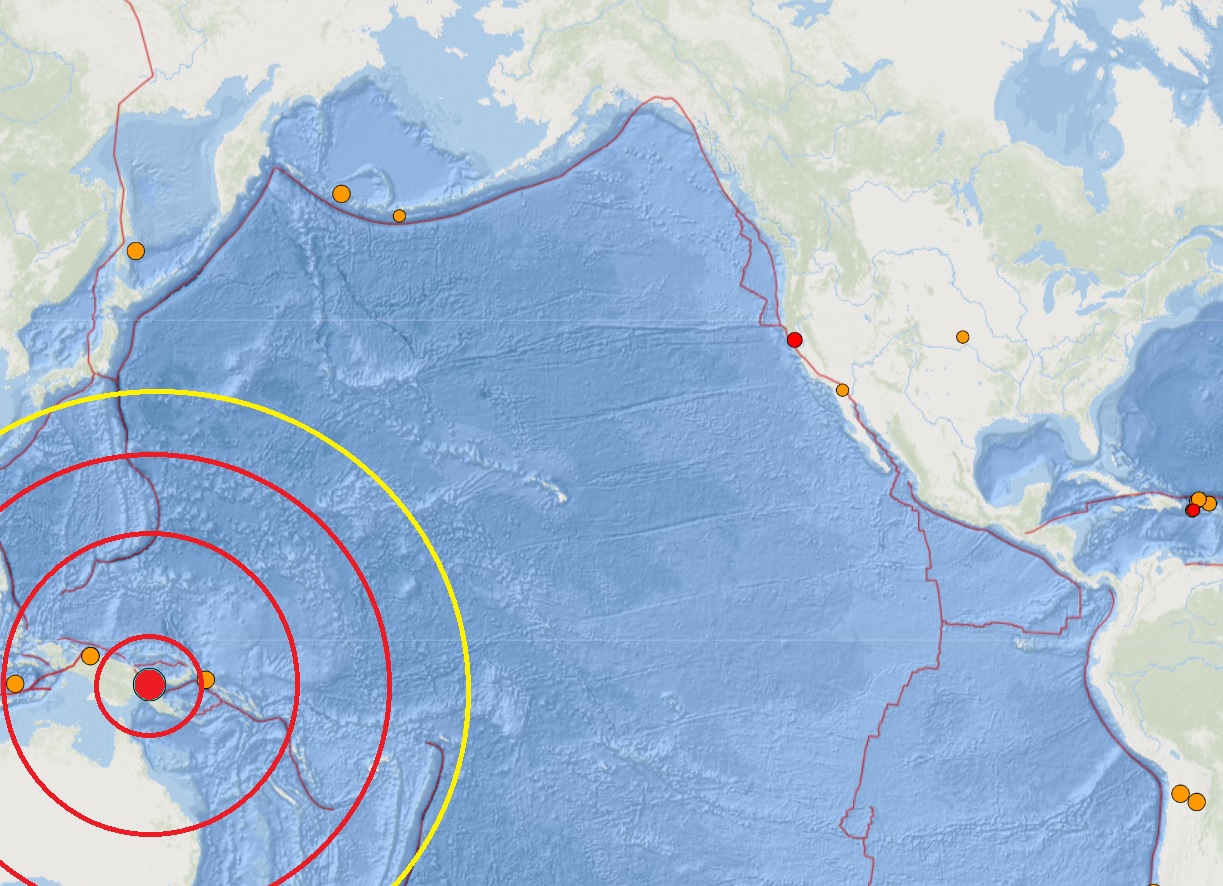
A powerful 7.6 earthquake rocked the Pacific today, however forecasters with the National Weather Service’s Tsunami Warning Center in Honolulu, Hawaii say this earthquake did not trigger a Pacific-wide tsunami.
According to USGS, the strong earthquake struck at 1:46 pm Hawaii time on the east coast of Papua New Guinea, roughly 41 miles east of the city of Kainantu. Rated initially a 7.7 magnitude event and later corrected to a 7.6 magnitude event, the epicenter was at a very deep 56 miles.
The Independent State of Papua New Guinea is a country in Oceania that comprises the eastern half of the island of New Guinea to the north and east of Australia.
While the earthquake struck outside of the United States, 70 people in Papua New Guinea used the USGS “Did you feel it?” website to report shaking and damage to the east central part of the country.
The National Weather Service’s Tsunami Warning Center issued six separate bulletins due to the intense earthquake. In each, they downplayed any risk of tsunami to Hawaii or to the U.S. West Coast. Initially, based on preliminary earthquake parameters, the Tsunami Warning Center said that tsunami waves could be possible within 1,000 km of the epicenter along the coasts of Indonesia and Papua New Guinea. A follow-up bulletin was issued not long after saying the threat of any tsunami from this seismic event had passed.
Tsunamis are giant waves caused by earthquakes or volcanic eruptions under the sea. Out in the depths of the ocean, tsunami waves do not dramatically increase in height. But as the waves travel inland, they build up to higher and higher heights as the depth of the ocean decreases. According to the National Ocean Service, the speed of tsunami waves depends on ocean depth rather than the distance from the source of the wave. Tsunami waves may travel as fast as jet planes over deep waters, only slowing down when reaching shallow waters. While tsunamis are often referred to as tidal waves, this name is discouraged by oceanographers because tides have little to do with these giant waves.
A massive volcanic eruption in January of this year did unleash a catastrophic tsunami. On January 15, a massive volcanic eruption hit Tonga’s Hunga Tonga volcano, generating a massive mushroom cloud over the Pacific Ocean while tsunami waves washed over nearby communities. The gigantic blast, which occured in the Pacific Ocean about 1,300 miles northeast of New Zealand and 2,000 miles southwest of Hawaii, was so loud its roar was heard across portions of New Zealand. Fiji, which is located more than 500 miles away, reported “loud thunder sounds” as the explosive volcanic eruption unfolded. A catastrophic tsunami struck areas close to the volcanic blast, but a Pacific-wide tsunami also unfolded, producing damage in Hawaii and turbulent surf along the North American west coast.